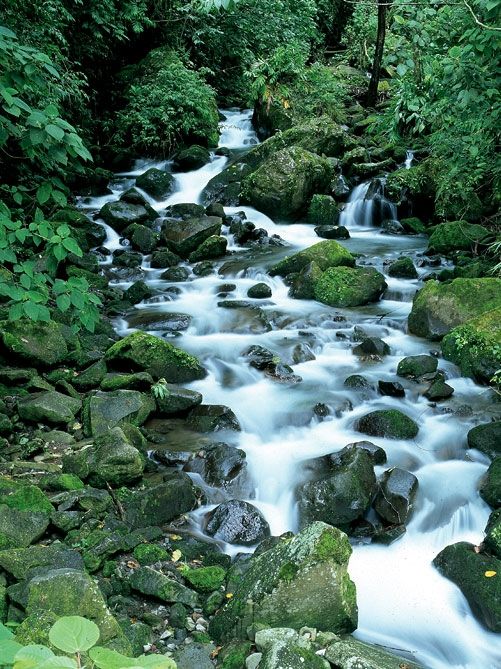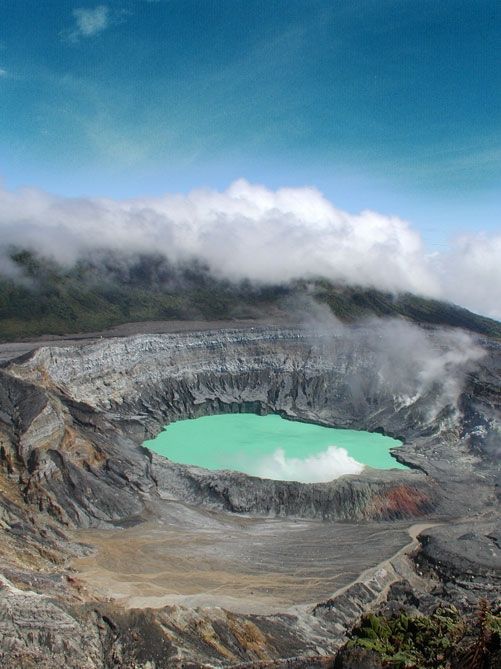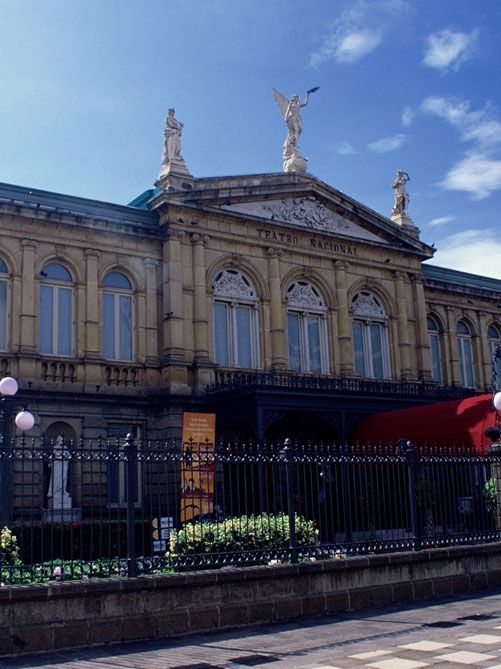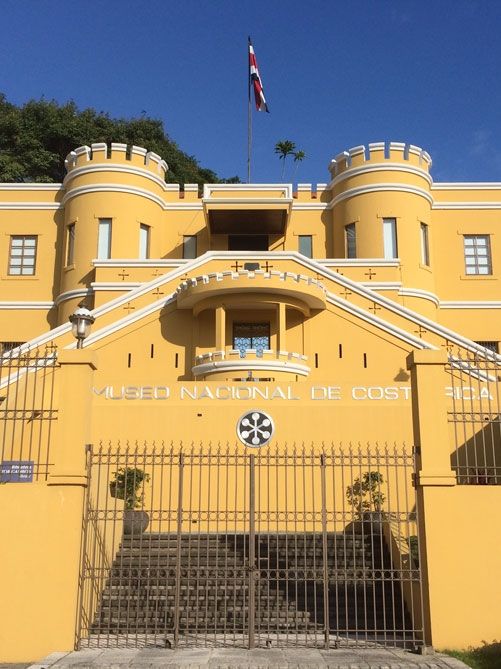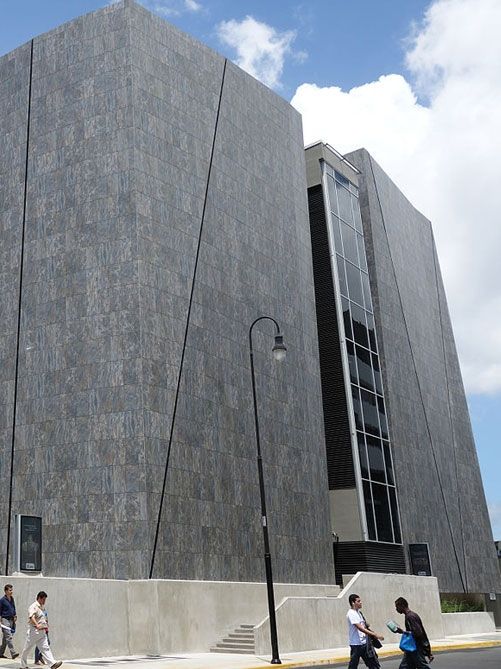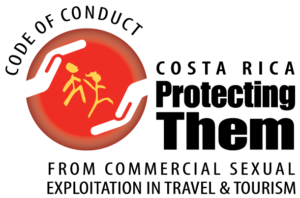Central Valley
San José
The capital of Costa Rica is located in the centre of the country, at 1´100 meters above sea level in the Central Valley, also called Valle Central. The city is surrounded by a volcanic mountain to the north and by a non-volcanic mountain to the south. Thanks to the fertile volcanic soil, the Central Valley offers perfect conditions for the production of coffee, ornamental plants and fruits. San José has been growing quickly during the last few years and now our visitors can find different architectural styles in the city, which allows being a point of historical interest. Over the past few years, the strong increase in traffic is causing chaos during rush hours. Buses, taxis and cars continuously pass through the fruit and vegetable stalls in the narrow streets of the city.
LOAD MORE...The market can be found in the centre of the city. The Main Post Office is one of the last colonial-style buildings and the National Theater one of the most attractive monuments. The Plaza de la Cultura is located right next to the National Theater and it represents a meeting place in general for all citizens. Sometimes you can enjoy the sound of the famous Marimba playing in the square.
San Jose also offers some museums. We recommend a visit to the Jade Museum and the Pre-Columbian Gold Museum, where you can learn about the pre-Columbian history of the indigenous peoples of Costa Rica. The National Museum is well worth a visit, it will give you an impression of the earliest history of the country. Many of the natural attractions are located very close to San Jose, we offer a wide variety of half-day or full-day excursions to volcanoes, coffee plantations, rain forests and cloud forests.
San Jose also offers attractive nightlife. You can find many restaurants, bars, night clubs and casinos throughout the city. Only on Sundays, it’s a little quieter and it can be difficult to find an open restaurant. However, Monday to Friday, you have many options to go out for dinner or go to enjoy some rhythms. Upon your arrival, we will provide you with an information brochure, where you will be able to find some recommendations for restaurants and places to go out at night. We recommend that if you choose a site to have dinner or simply enjoy a drink, take official transportation to and from that place. We do not recommend walking in unknown areas of the city at night.
Heredia
This province is part of the Central Valley, together with the three other provinces San José, Cartago and Alajuela. It is located 12 km from San José, Costa Rica´s capital, and is remarkable for its extensive coffee plantations and the cultivation of the so-called "gold grain". It is also known as "the city of flowers", not only because of the cultivation of flowers for exportation but also due to the many families with surname "Flores" living in this province. Heredia is the smallest province of Costa Rica. It has a warm and humid climate and also offers mountainous areas with exuberant flora and fauna. In its heights, the climate is cold and you can appreciate the rainforest in the skirts of the Barva Volcano, one of the main attractions of the place.
LOAD MORE...The province also stands out for its colonial tradition. You can still see adobe houses with roofs that are representative of Spanish architecture during colonial times. It is also a picturesque province, full of Costa Rican traditions, with mills, sawmills, picturesque villages and spectacular landscapes.
Cartago
This city is located about 25 km (16 mi) east of the capital San José, at an elevation of about 1'435 m (some 4,707 ft) above sea level, at the base of the Irazú Volcano. Cartago is the capital of the province of Cartago and was the colonial capital of the back then province Costa Rica from 1574 to 1823.
LOAD MORE...It is the religious centre of the Catholic Church in Costa Rica. The Plaza Mayor in Cartago includes the Santiago Apostol Parish ruins, about seven blocks west of the basilica. Despite their beauty, they are not real ruins but an unfinished building that was started in the last quarter of the 19th century and was badly damaged by the disastrous Santa Monica earthquake (8.3 on the Richter scale) on the 4th of May 1910, just before the roof could be constructed. The building has been discontinued since then and is a national historical site today. Definitely, Cartago is a province within the Central Valley that has a lot to offer!
Alajuela
Alajuela is the second-largest province of Costa Rica. Besides the fact that the Juan Santamaría International Airport is located here, it hosts a large number of attractions and activities for everyone's enjoyment! Most of the places of cultural interest are located in the vicinity of Central Park. It is one of the few cities that preserve its historical centre from the 19th century.
LOAD MORE...In this province, you can find tourist attractions to visit in one day, such as Doka Estate Coffee Tour, Botanical Orchid Garden, The Farmers Market, La Paz Waterfall Gardens, Poás Volcano and its surroundings, Sarchí, famous for being the cradle of the manufacture of the typical cart and wooden furniture, and Zarcero, famous for its church San Rafael which is a beautiful building both inside and out. Those who appreciate art will be amazed by the religious paintings, architecture and colourful stained glass windows. The city is represented with great pride by Juan Santamaría, the hero who sacrificed his life to save the country during the battle of Santa Rosa in 1856 against the armed forces of the filibusters under the command of William Walker. Also in the surroundings, you can see coffee, cattle and sugar cane plantations.








